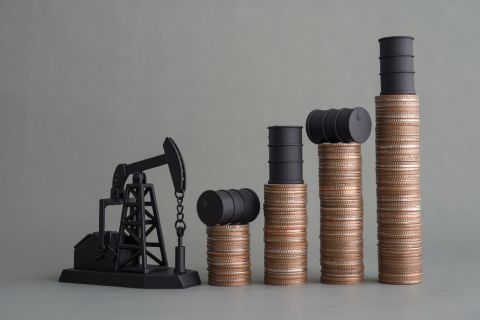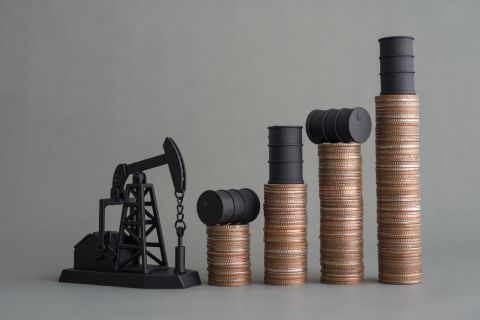
Remember peak oil?
No, not M. King Hubbert’s pre-Shale Boom theory of terminal decline. Think back to November 2016 to the statement by Simon Henry, CFO of Royal Dutch Shell Plc. (NYSE: RDS.A).
“We’ve long been of the opinion that demand will peak before supply,” he said on a conference call with analysts. “And that peak may be somewhere between five and 15 years hence, and it will be driven by efficiency and substitution, more than offsetting the new demand for transport.”
Nothing drives up the price like scarcity, but even a pronouncement from mighty Shell doesn’t necessarily make it so. While others in the industry have lined up behind Shell’s philosophy, Nicole Leonard of S&P Global Platts does not.
“I’m going to give you an alternative narrative,” she told attendees at the recent S&P Global Midstream Energy and Oil & Gas Breakfast Forum in Houston. “Rather than seeing peak demand, I argue that we will see demand shift up the barrel.”
 Leonard, who managed to say “bottom of the barrel” in a non-derogatory way, described developing countries’ need for products like asphalt, bunker fuel and fuel oil for power generation. As countries develop, their demand for distillates, octane and diesel grows.
Leonard, who managed to say “bottom of the barrel” in a non-derogatory way, described developing countries’ need for products like asphalt, bunker fuel and fuel oil for power generation. As countries develop, their demand for distillates, octane and diesel grows.
“As a country develops, you start to demand more of those luxury items like Tupperware and plastic bags,” she said. “The demand for the barrel is just going to get lighter. You need less of the bottom and more of the top.”
That’s good long-term news for NGL, even if the hypothetical NGL barrel dropped in the past week at both the Mont Belvieu, Texas (-3.4%), and Conway, Kan. (-7.4%), hubs.
The barrels were brought down by sharp declines in propane and butanes.
Propane at Mont Belvieu declined 5.7%, with Conway propane down 14.5% to fall below 50 cents per gallon (gal) for the first time since early January. En*Vantage noted that “domestic fuel demand for propane has been exceptionally strong despite winter weather being relatively mild.”
A return to colder weather could push deeper into propane inventories, the analysts said. Whether stocks will build sufficiently during the summer is uncertain.
 The return to service of a major fractionator at Mont Belvieu may have contributed to butane’s price swings of late, En*Vantage reported. Normal butane was off 4% at Mont Belvieu this week and isobutane dropped 11%. At Conway, butane took a 10% hit, with isobutane down 11%.
The return to service of a major fractionator at Mont Belvieu may have contributed to butane’s price swings of late, En*Vantage reported. Normal butane was off 4% at Mont Belvieu this week and isobutane dropped 11%. At Conway, butane took a 10% hit, with isobutane down 11%.
Ethane was little changed at both hubs. With new crackers not expected online until late in the year, and time needed for the complicated equipment to ramp up fully, price volatility for ethane is likely to be a theme throughout 2017, En*Vantage said.
Storage of natural gas in the Lower 48 declined by 114 billion cubic feet (Bcf) in the week ended Feb. 10, the U.S. Energy Information Administration reported. The decrease, below the Bloomberg consensus of 126 Bcf, resulted in a total of 2.445 Tcf. The figure is 11% less than the 2.748 Tcf figure at the same time in 2016 and 3.7% above the five-year average of 2.358 Tcf.
 Joseph Markman can be reached at jmarkman@hartenergy.com and @JHMarkman.
Joseph Markman can be reached at jmarkman@hartenergy.com and @JHMarkman.
Recommended Reading
What's Affecting Oil Prices This Week? (Aug. 26, 2024)
2024-08-26 - For the upcoming week, Stratas Advisors expects that oil prices will move upwards but that the price of Brent crude will not break through $82 without some additional geopolitical disruption.
What's Affecting Oil Prices This Week? (Sept. 23, 2024)
2024-09-23 - For the upcoming week, oil prices could get a boost from another storm forming in the Gulf of Mexico that could be a hurricane by the evening of Sept. 25 and possibly affect much of the eastern Gulf Coast.
What's Affecting Oil Prices This Week? (Oct. 7, 2024)
2024-10-07 - Given last week’s price increase, Stratas Advisors estimates that the oil market is placing about a 10% probability that the conflict between Israel and Iran will result in a disruption to the flow of oil.
What's Affecting Oil Prices This Week? (Sept. 30, 2024)
2024-09-30 - Based on Stratas Advisors' demand forecast, there is room for Saudi Arabia to increase supply gradually and not collapse oil prices — if there is no dramatic increase in non-OPEC supply and the other members of OPEC+ do not grossly exceed their quotas.
What's Affecting Oil Prices This Week? (Sept. 16, 2024)
2024-09-16 - With expectations for more favorable supply/demand fundamentals and improvement in the sentiment of oil traders, Stratas Advisors forecast higher oil prices with the price of Brent crude moving back above $80.
Comments
Add new comment
This conversation is moderated according to Hart Energy community rules. Please read the rules before joining the discussion. If you’re experiencing any technical problems, please contact our customer care team.






